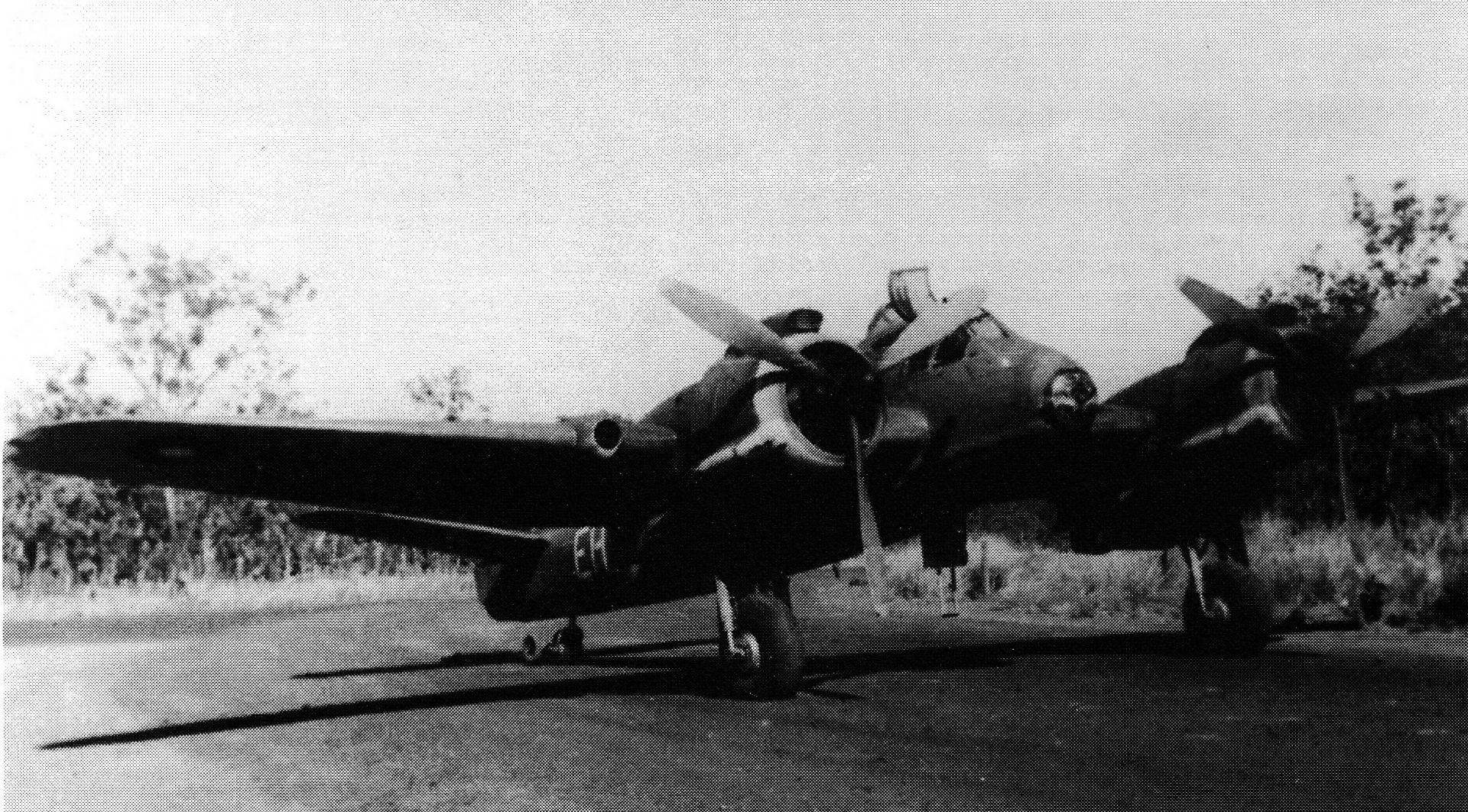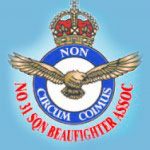Lloyd Ritchie
Lloyd Ritchie
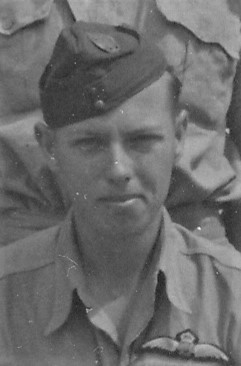
Lloyd Ritchie
Born 6-12-1922, enrolled at No 2 I.T.S on 19-6-42. Performed several postings and eventually came to No5 O.T.U at Forest Hill, Wagga Wagga. From there he trained and was posted to 31 Sqn at Coomalie Creek on the 11-3-44. Once there he did his familiarisation and further training flights and performed his first mission on the 1-4-44
Lloyd Ritchie is front row 2nd from the right.
Lloyd went on to perform many missions and operations until he was lost when returning from a mission on the 24-9-1944
Two aircraft were lost over the Northern Territory on that night of the 24th while returning from escort duty.
The bush fire season had commenced and smoke haze effectively camouflaged Coomalie and the planes’ crews were soon unsure of their position. Warner and Ritchie were in A19-192, Wackett and Noble in A19-208, and their tracks were plotted on radar. Verey lights were fired, radio calls made and at Fenton, searchlights were coned to help guide them, all to no avail. Wackett, who had previously been shot down while flying Kittyhawks in New Guinea, had always said that if caught in such a situation, he would climb up and bale out.
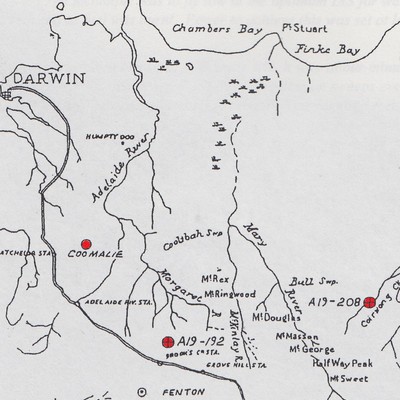
Radar tracked him to 16,000 feet heading east from Fenton, then the plot just dived off the screen. At first light the next day, C.O Darcy Wentworth flew three navigational tracks on the given plotting, arriving within one kilometre of the same point each time. With the bush fires, smoke would be rising as soon as it started to warm up, so search flights had to be made just after first light when it was still possible to see distress signals.
Twelve months later, wreckage presumed to be Wackett’s plane, was found by a stockman from Pine Creek NT. Caught in the same situation as Wackett, Ritchie headed back towards the smoke-hidden Coomalie. Near Box Creek, the decision was made to bale out.
Warner went first, apparently followed by Ritchie shortly after. The unmanned Beaufighter circled, nearly hitting Warner just before it crashed. Warner landed in the dust raised by the impact, then walked out to the nearby railway line. He survived to fight another day.
Searchers found the aircraft wreckage the next morning; a wallaby and a bird had been killed by the crashing plane. As they baled out at about 2,000 feet, the Beaufighter could not have been in the air for more than a minute which narrowed down the search area. Prisoners from the local detention camp were brought in to help search for Ritchie but no trace was ever found.
The following 2 pages are from Fred Andersons diary who was in 31 sqn. They relate to the search for Ritchie and Warner. Fred was sent by C.O Darcy Wentworth, to head up the search.

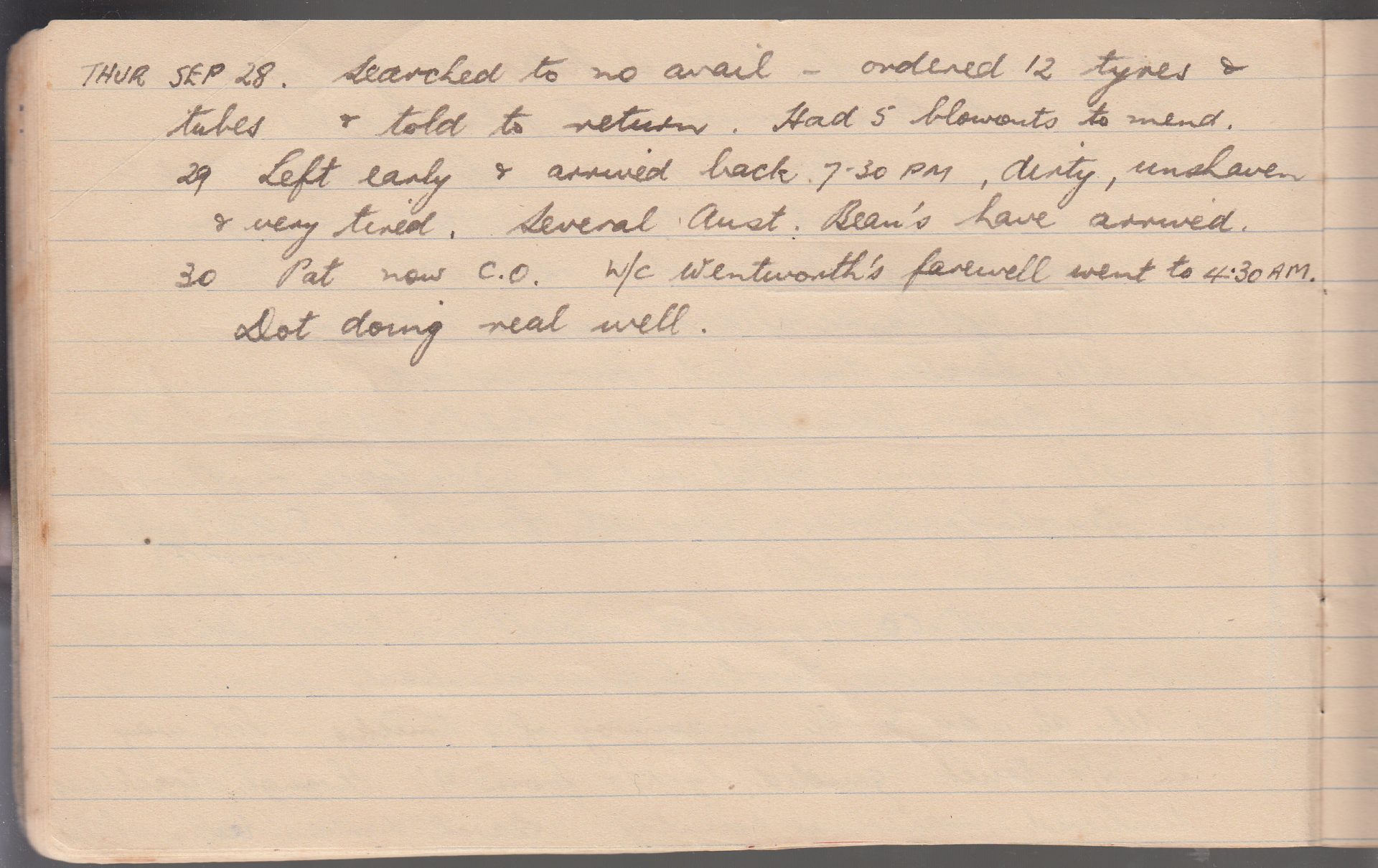
This Beaufighter, A19-192, was flown by eight crews in a three month period. It completed 3 sweeps, 5 convoy covers and 4 strikes. A19-192 was flown by Ritchie and Warner on its last mission on the night of 27th September.
